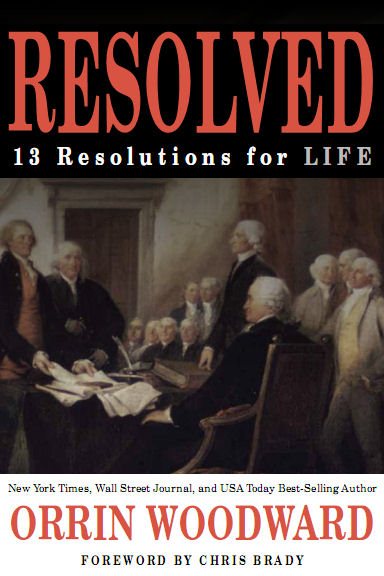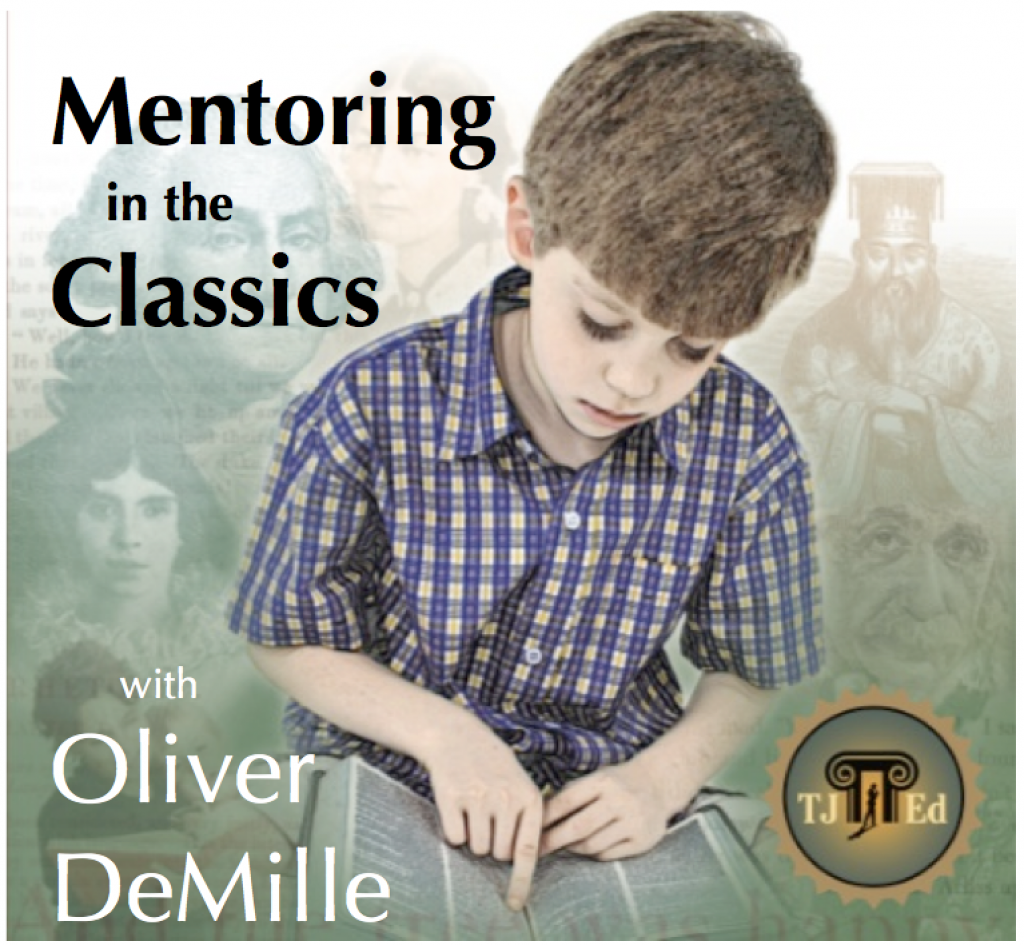Capitalism vs. Capitalism
March 20th, 2012 // 11:19 am @ Oliver DeMille
An Essential Debate for the Future of Freedom
There are two major types of economies: market and command.
Within these two branches there are a number of subtypes, including various command-style economies such as socialism, communism, fascism, collectivism, authoritarianism and totalitarianism.
The market-economy subgroups are sometimes more confusing to people from free societies, because most of us have been trained to evaluate politico-economic issues in binary mode where we narrow any debate down to only two sides (e.g. socialist or capitalist, democratic or totalitarian, good or evil, free or not free, etc.).
That said, we live in an era where the various subtypes of market economics are in conflict.
During the Cold War the world was divided between two great camps, with market economies of all types firmly allied against all command economies, but in the post Cold War and post 9/11 world this has dramatically changed.
There are forces supporting each of the various subtypes of market economy, and often these are pitted against each other in ways unthinkable before 1989.
Differentiating between these subtypes is important for anyone who wants to accurately understand what it happening in today’s world:
- Mercantilism: the law gives preference and special benefits to the sector of the economy owned by the government.
- Corporatism: the law gives preference and special benefits to the sector of the economy owned by big corporations within the nation (sometimes referred to simply as “Big Business”).
- Capitalism: the law gives preference and special benefits to the sector of the economy owned by big capital (including big corporations like in Corporatism, but also wealthy foreign and multinational corporations and non-corporate institutions, wealthy foundations, wealthy trusts, non-profit entities, wealthy families, moneyed foreign investors, and others with mass amounts of capital).
- Keynesianism: the law gives preference and special benefits to companies and institutions (corporate but especially non-corporate) that are so big that they care more about their public image for societal responsibility and promoting social justice than about profit(s), market share or stock value.
- Free Enterprise: the law gives no special preference; it protects equal rights for all individuals and entities and leaves initiative and enterprise to private individuals, groups, businesses and organizations that are all treated equally and with minimal legislation by the legal code.
All of these subtypes are market-based, though according to Keynes himself Keynesianism “seeks the goals of socialism through market means.”
For the last three generations these five subtypes of market economics have all been lumped together under the label of “capitalism.”
While this is technically inaccurate—because capitalism is a subtype rather than the whole of market economics—it is the way the word “capitalism” has been used by most people.
By this definition, capitalism is synonymous with “market economics” and is a label for the entire market-style model.
So we have two definitions of “capitalism” in the current usage: one a title for the whole market field of economics (we’ll call it capitalism Type 1), and the other a specific type of market economics where preference is given to those with large amounts of capital (capitalism Type 2).
These are frequently confused in our contemporary language.
Supporters of freedom get understandably frustrated when anyone questions the superiority of Type 1 over command economies, but it is vital to understand how Type 2 differs from free enterprise.
Adding to this confusion, corporatism is not the same as Type 2 capitalism.
Corporatism doesn’t include capitalism Type 2 at all, but capitalism Type 2 always includes corporatism as part of what it calls “capitalism.” (Corporatism is to Type-2-capitalism what apple is to fruit.)
In short, Type 2 capitalism is much broader than corporatism, as shown in the definition above.
Again, this is confusing to most people, but understanding the details and nuances of how these words are used is extremely important.
Note that the American founders dealt with many similar language challenges, such as when Madison spent Federalist papers 10 and 14 explaining the important differences between democracies and republics, or when he used papers 18, 19 and 20 to elucidate the differences between federations, confederations, national and federal government.
Without such clarity, the Constitution would have been confusing to many Americans who were deciding whether or not to ratify it.
There are numerous similar examples, and part of being a free people is taking the time to understand the nuances of economic and political freedom.
Note that few things are more essential for free people than clearly understanding what type of economic system they want.
Based on the definitions above, consider these three conclusions:
- All of the market subtypes are better than all types of command economies. Even the market approaches with the least freedom (Keynesianism and mercantilism) are significantly better (with more freedom, opportunity and prosperity for more people) than the command system with the most freedom (collectivism).
- On the subject of the five subtypes of market economy, free enterprise is significantly better (with more freedom, opportunity and prosperity for all), than mercantilism, corporatism, capitalism Type 2, and/or Keynesianism.
- The United States today has far too much mercantilism, corporatism, Type 2 capitalism, and Keynesianism and not enough free enterprise.
Many moderns say we are a “capitalist” nation or vote for the “capitalist” candidate and conclude that all is well, when in fact free enterprise is under attack from socialism but also just as strongly from mercantilists, corporatists, Keynesians and Type 2 capitalists.
Voters and citizens must know what to look for when a policy or candidate claims to promote “capitalism.”
***********************************
 Oliver DeMille is the co-founder of the Center for Social Leadership, and a co-creator of Thomas Jefferson Education.
Oliver DeMille is the co-founder of the Center for Social Leadership, and a co-creator of Thomas Jefferson Education.
He is the co-author of New York Times, Wall Street Journal and USA Today bestseller LeaderShift, and author of A Thomas Jefferson Education: Teaching a Generation of Leaders for the 21st Century, and The Coming Aristocracy: Education & the Future of Freedom.
Oliver is dedicated to promoting freedom through leadership education. He and his wife Rachel are raising their eight children in Cedar City, Utah.
Category : Blog &Business &Economics &Featured &Government &Liberty &Prosperity
The New Challenge of Governments
February 28th, 2012 // 10:03 pm @ Oliver DeMille
 Globalization is changing the demand on governments around the world. Since the advent of the nation-state in 1648, the purpose of national government has been to protect its citizens from attack by international forces and domestic criminals.
Globalization is changing the demand on governments around the world. Since the advent of the nation-state in 1648, the purpose of national government has been to protect its citizens from attack by international forces and domestic criminals.
Local government has focused on providing the various needs of citizens as deemed appropriate by voters and constitutional by the courts, and together these two levels of government (national and state in the U.S.) have been responsible for certain limited roles; the rest was left to private institutions and citizens.
With the growth of internationalism in the twentieth century, many governments took on the additional responsibility of helping its citizens prosper through the use of diplomacy, military strength and multilateral decision-making abroad.
Such responsibilities included, for example, the safety of citizens traveling the world, the protection of international investments by domestically-owned corporations, and the maintenance of trade and low prices in important commodities (from sugar to petroleum).
Where internationalism added a few such roles to many national governments, globalism is rewriting the entire purpose of government.
And where internationalism assumes a world made up of various separate nations with individual sovereignty and diplomatic arrangements between equals, globalism is based on a different perspective.
In the globalist view, we live in one world, everything that happens everywhere affects us all, and government should care for citizen needs by taking action around the world as needed to protect and promote the best results for its constituents.
Basically nothing is off limits.
This adds numerous implied responsibilities to governments that embrace the globalistic worldview.
For people who believe government should be limited to the authorities explicitly delegated by the people in the Constitution (as I do), this is a disturbing development.
It is becoming a concern for everyone as time passes.
On a technical level, the U.S. Constitution allows the federal government to engage in and ratify treaties with other nations, and when this occurs these treaties become part of the de facto constitutional structure of our nation.
In the era of internationalism (beginning around 1913 and expanding ever since, especially after 1944), the treaty powers have been used to drastically change our Constitutional model.
This is part of the “fine print” of our Constitutional society, and it has been ignored by almost all ordinary citizens.
But the shift from internationalism to globalism is a significantly bigger change (in size and also scope) than the shift from nationalism to internationalism.
Under the new values and ideals of globalism, the role of government is, well, everything it deems desirable.
Literally.
This viewpoint is fundamentally the end of limited government.
Government in the global era is expected to survey the world, see needs, debate and vote about them, and pass legislation or issue executive orders to deal with whatever the government deems advantageous—the Constitution notwithstanding.
This includes taking action at the most local and personal level, including in peoples’ homes and family decisions, and also at the macro-level in any and every corner of the world.
This is big government gone über.
In this view, government should do whatever is needed to accomplish whatever it considers popular or important.
The courts are allowed to sort out whether or not such action was acceptable, but only after the fact. No checks stop such government action and no balances are required before the government can act.
This is more than big government; it is closer to the philosophy of governance that Hobbes called Leviathan.
No wonder the government hasn’t yet figured out quite how to respond to this changing sense of the state’s proper role.
Congressman Paul Ryan argues that the federal government doesn’t have a tax problem but rather a spending problem, but according to this new viewpoint of globalism the U.S. is going to have to spend a lot more—a lot more!—in the years and decades ahead to fulfill its proper role.
From this perspective, our federal spending spree is just getting started, and the only way to meet the need is to fundamentally reform taxation and get the upper and upper middle classes to foot the bill for a globalist government run from Washington.
In this outlook, we’ll need to keep raising the budget every year and the required spending is deeply underfunded.
Only massive increases in taxes can get us moving in the right direction.
The old debate between Conservatives and Liberals just doesn’t rise to the level of this new challenge, and the current energy in Washington is focused on a globalistic agenda that anticipates drastic increases in government for decades to come.
Georgetown University’s Charles A. Kupchan, wrote:
“A crisis of governability has engulfed the world’s most advanced democracies. It is no accident that the United States, Europe and Japan are simultaneously experiencing political breakdown; globalization is producing a widening gap between what electorates are asking of their governments and what those governments are able to deliver.” (Foreign Affairs, January/February 2012)
Globalism is leading to a natural decrease in the living standard of developed nations, and citizens of such nations are turning to government to help bring back the lifestyles they’ve grown accustomed to enjoying.
As the lower and middle classes of the world join the global economy, and as competition for investment and credit is spread around the globe, the special benefits that the middle classes in advanced nations have carved out for themselves are becoming unsustainable.
The middle class was created by generations who worked very hard to earn such benefits, but their posterity seems to prefer keeping these same perks without putting forth the same effort.
When this doesn’t work, they want their government to simultaneously block immigrants from “taking our jobs” and also find ways to maintain their parents’ lifestyle without having to earn them the same way earlier generations did.
Except for the entrepreneurial class—and government is increasing the barriers to entrepreneurship.
This is painful.
And it forces a choice at the voting booth: either more freedom coupled with harder work on the one side or higher taxes on the rich combined with more government benefits on the other.
The “government fix” approach is predictably more popular.
The real answer is to re-establish a truly free system, where the government limits itself to the authority outlined in the Constitution and the laws are altered to re-emphasize true free enterprise where the laws treat everyone (lower, middle and upper classes) equally.
Freedom works, and a refocus on freedom will once again make America’s economy the envy of the world.
Capital, investment and entrepreneurialism aren’t fleeing the United States because of globalism but because Washington’s policies have made the U.S. economy less profitable and attractive to business.
Unless the United States returns to a genuine free-enterprise model, our long-term economic trajectory will decline.
The battle has changed, though most people haven’t realized it yet.
Now it’s less about Left vs. Right and more the burgeoning issues of Free Enterprise vs. Globalism.
***********************************
 Oliver DeMille is the co-founder of the Center for Social Leadership, and a co-creator of Thomas Jefferson Education.
Oliver DeMille is the co-founder of the Center for Social Leadership, and a co-creator of Thomas Jefferson Education.
He is the co-author of New York Times, Wall Street Journal and USA Today bestseller LeaderShift, and author of A Thomas Jefferson Education: Teaching a Generation of Leaders for the 21st Century, and The Coming Aristocracy: Education & the Future of Freedom.
Oliver is dedicated to promoting freedom through leadership education. He and his wife Rachel are raising their eight children in Cedar City, Utah.
Category : Blog &Current Events &Government &Leadership &Liberty &Politics &Statesmanship
Resolve to read this book.
February 25th, 2012 // 8:37 am @ Oliver DeMille
A review of Orrin Woodward’s game-changing new book, Resolved: 13 Resolutions for LIFE
by Oliver DeMille
 The freedom of any society is directly related to the quality of books that are widely read in that society. That said, there are some books everyone should read, like The Federalist Papers and Democracy in America.* And in a society like ours where we are desperate for more leaders at all levels, truly excellent books on leadership are vital to the future of freedom.
The freedom of any society is directly related to the quality of books that are widely read in that society. That said, there are some books everyone should read, like The Federalist Papers and Democracy in America.* And in a society like ours where we are desperate for more leaders at all levels, truly excellent books on leadership are vital to the future of freedom.
I recently read a book on leadership that everyone simply must read. It is Resolved, by Orrin Woodward.
I’ve read Woodward’s books before, so when this one arrived in the mail I put away everything else and read it straight through. It kept me up most of the night, and it was so worth it!
This is a fabulous book on leadership. It outlines 13 resolutions every person should make in our modern world, and gives specific helps on how to turn them into habits. Indeed, this book could be titled The 13 Habits of Success and Happiness for Everyone. The stories and examples from great leaders of history and current events are moving and uplifting. I literally have never read a better book on leadership than this one.
Woodward’s book is on par with the great leadership works like:
- Good to Great
- The 7 Habits of Highly Effective People
- Acres of Diamonds
- A Message to Garcia
- Theory of Constraints
- The E-Myth
- Cashflow Quadrant
- Leadership and Self-Deception
- The Radical Leap
- One Minute Manager
- Rascal: Making a Difference by Becoming an Original Character
- Emotional Intelligence
It is truly a revolution in leadership books.
The 13 resolutions are exactly what we need leaders to adopt across our society. They are applicable to family and home leadership, community and business leadership, and societal and national leadership. They apply to the United States and other countries, and together they form a blueprint for renewing America and innovating a new and better Western Civilization.
The book is divided into three parts: private resolutions, public resolutions and leadership resolutions. Each of the 13 resolutions build upon each other, and together they create an effective and motivating system of becoming a better person and leader. They help the reader improve in career and in societal impact.
This focus on societal leadership is both timely and profound. In the 1950s we experienced a major “leader-shift” in society. Before World War II, most communities were led by professionals—doctors, lawyers, teachers, accountants, etc.—and before that by big landowners and even earlier tribal chiefs. The management revolution started by Edward Deming and popularized by Ray Kroc changed the focus of leading society from professionals to managers. This was captured in William Whyte’s great 1956 classic The Organization Man.
By the 1980s another major leader-shift occurred, this time from management (“do things right”) to leadership (“do the right things”). The great transitional classic of this shift was The 7 Habits of Highly Effective People by Stephen Covey. It outlined 7 habits that leaders needed in order to help their companies excel, and these habits became part of the mainstream language: for example, “Be Proactive,” “Think Win-Win,” and “Synergize.” Another great classic of this shift was Synergetics by Buckminster Fuller. The leadership revolution brought a whole new vision of what is means to be a leader.
Today we are witnessing a similar leader-shift, this time from leadership of organizations (“do the right things”) to leadership of society (“move society in the right direction”). Woodward’s Resolved is a seminal classic in this change. In fact, some of the early books in this change include Launching a Leadership Revolution by Orrin Woodward and Chris Brady, The 8th Habit by Stephen Covey, and Primal Leadership by Daniel Goleman.
Woodward is more than an author; he has actually put these 13 resolutions to work in his business leadership. For this leadership, Orrin Woodward was named the 2011 International Association of Business’s Top Leader of the Year Award. His book Resolved outlines how we can all become such leaders.
In Resolved, Woodward shares a host of ideas and effective means of using family, business and societal leadership to impact the world. For example, he shows how Gibbon and Toynbee taught the laws of decline that are now attacking our culture and modern free nations.
He shows the three types of freedom and why they depend on each other—and how the loss of one is actually a loss of all. He helps leaders understand how freedom and character are inseparable and at the root of all societal progress and therefore leadership. His model of “Leadership Legacy” alone is worth the price of the book, and adds a whole new dimension to leadership literature.
Woodward adds several other new models to the leadership genre. He shows how five important laws from science, economics and history (Sturgeon’s Law, Bastiat’s “Law,” Gresham’s Law, the Law of Diminishing Returns, and the Law of Inertia) are combing in our current world, and what leaders need to understand and do about these five laws—individually and collectively.
These five laws are already part of our mainstream culture, but the analysis of how they are working together and what future leaders must do about it is new, deep and profound. No leader can afford not to understand this cutting-edge thinking.
On a stylistic note, Woodward consistently uses fascinating quotes, ideas, stories, historical examples and even one equation in ways that make the reader see things in a whole new way. For example, he puts an intriguing new twist on Chaos Theory, the Butterfly Effect, a poem by Yeats, Systems Theory, the writings of C.S. Lewis and J.R.R. Tolkien, credit card usage, American Idol, the “TriLateral Leadership Ledger,” the IBM way, Aristotle on true friendship, and many other delightful references from every field of thought –all written in a highly understandable and enjoyable way.
After I read Resolved the first time, I placed it next to my work chair and each day I open it randomly and read the quotes or stories on whatever page opens. It is always uplifting. Here are a few topics I’ve studied in Resolved during such random reading:
- Why courage isn’t pragmatism
- Producers vs. Exploiters
- A commentary on Jim Collins’ Hedgehog Principle
- The common reasons 23 major civilizations in history declined, and how we can avoid their mistakes
- The combining of mind, heart and will
- Charles Garfield on Success through Visualization
- Will Smith’s work ethic
- Never whine, never complain, never make excuses—and what to do instead
- Woodward’s 10 principles of financial literacy (Wow! Every American should study these.)
- Five steps for effective conflict resolution—in family, business and beyond
- How to really build business systems that work
- Henry Hazlitt’s economics in one lesson—and how to really understand the economy
- The conflict between creativity and realism in national leadership
There is so much more. In one example, Woodward quotes G.K. Chesterton after he was asked to write an essay on “What’s Wrong with the World?” Chesterton wrote simply: “Dear Sirs, I am. Sincerely yours, G.K. Chesterton.” This, in summary, is what Resolved is all about. The rest of the book, all 13 resolutions, teaches us how to effectively become the leaders the world needs—and that we were born to be.
This book has articulated the leadership motto of the 21st Century: “It has been said that everyone wants to change the world but few feel the need to change themselves. Even a basic study of history, however, demonstrates that those who first focus upon self-improvement usually ending up doing the most good in the world.”
Gandhi taught the same sentiment when he said that we must be the change we wish to see in the world, and Woodward quotes Confucius in saying that those who want to improve the world must ultimately focus on bettering themselves.
Buddha is credited with saying that our purpose in life is to find our purpose in life, and then to give our whole heart and soul to accomplishing this purpose. Perhaps no generation more exemplified such leadership by example than the American founders, and Woodward discusses them and their words (especially Washington and Franklin) at length in showing us how to become the leaders we meant to be.
Woodward also shows examples of effective leadership from such greats as Sam Walton, John Wooden, Ludwig von Mises, and Roger Bannister, among others.
I could go on and on. Resolved really does, in my opinion, mark a leader-shift to a whole new level of leadership training for the new Century. If you are only going to get one book on leadership, this is the one. What a great book. Our whole society needs to study more about leadership, and apply what we learn.
*Links to book titles provided for your convenience in reviewing and purchasing referenced books. Any purchases on amazon initiated from these links result in amazon sharing a portion of their profits with TJEd. Thanks so much for your support!
***********************************
 Oliver DeMille is the co-founder of the Center for Social Leadership, and a co-creator of Thomas Jefferson Education.
Oliver DeMille is the co-founder of the Center for Social Leadership, and a co-creator of Thomas Jefferson Education.
He is the co-author of New York Times, Wall Street Journal and USA Today bestseller LeaderShift, and author of A Thomas Jefferson Education: Teaching a Generation of Leaders for the 21st Century, and The Coming Aristocracy: Education & the Future of Freedom.
Oliver is dedicated to promoting freedom through leadership education. He and his wife Rachel are raising their eight children in Cedar City, Utah.
Category : Blog &Book Reviews &Business &Entrepreneurship &Family &Leadership &Liberty &Mini-Factories &Mission &Producers &Prosperity &Service &Statesmanship
The New Grand Strategy for 2012
February 20th, 2012 // 2:50 pm @ Oliver DeMille
1. Two Speeches
Several years ago I spoke at a seminar on international affairs and I predicted that in the next few years the United States would adopt a new Grand Strategy. I outlined America’s historical Grand Strategies, from Constitutionalism (1789-1820) and Manifest Destiny (1820-1900) to Nationalism (1900-1945) and later Internationalism (1945-2001).
I pointed out that our Grand Strategy is the way we define our major national goals for the decades ahead, and that after 9/11 we were on track for a new Grand Strategy. We discussed some possible Grand Strategies that could come, and we brainstormed things we hoped to see in the Grand Strategy of the 21st Century.
The same year, in another speech on a different occasion, I showed how many of the predictions found in one publication, Foreign Affairs, keep ending up as official U.S. policy. I cited numerous examples from articles in Foreign Affairs and showed how within five years of publication their recommendations were adopted. I marveled that one publication could have such an effective track record, and recommended that everyone in attendance subscribe to and read this magazine.
Of course, as I said in the speech, not all the authors in Foreign Affairs agree on every detail, and in fact they engage in a great deal of debate. But, again, is it amazing how often policies recommended in Foreign Affairs end up being implemented in Washington.
Then, just this year, the messages of these speeches came together in an interesting way. In the January/February 2012 issue of Foreign Affairs, a new article outlines a new Grand Strategy for the United States. Although I don’t agree with many of the details in this latest Grand Strategy, the track record of Foreign Affairs promises that this will, in fact, be the Grand Strategy of the United States in the decades ahead.
I believe that this will be the major 21st Century challenge for the future of American freedom.
2. Grand Strategy Drives the Nation
The power of a Grand Strategy can hardly be overstated. When a nation adopts a Grand Strategy, it dominates national policy and influences all national choices over time. Few, if any, policies go against or are even allowed to compete with the accepted Grand Strategy.
And while not everyone knows what a Grand Strategy is, the intelligentsia of both parties tend to follow the Grand Strategy with the energy and passion of religious doctrine. They may disagree on many things, but they both adhere to the Grand Strategy.
So what is the new Grand Strategy of the United States? The answers are outlined in an article by Zbigniew Brzezinski: “A New U.S. Grand Strategy: Balancing the East, Upgrading the West”. Students of American policy will remember Brzezinski as the U.S. National Security Advisor from 1977 to 1981 and as a long-time writer on U.S. international strategy.
3. Our New Grand Strategy
Things have changed drastically over the past decade, Brzezinski assures us, and by 2012 a new Grand Strategy is overdue. The outlines of this new plan include the following:
- The “central focus” for the United States in the years ahead is threefold: (1) revitalize the U.S., (2) help the West expand, and (3) create a balance in the East that will allow China to successfully rise without becoming an enemy.
- The expansion of the West will create a democratic free zone from North America and Western Europe to a number of other nations, including Eastern Europe, Russian, Turkey, Japan and South Korea.
- In the East, U.S. power and influence will attempt to create a cooperative relationship between China and Japan and keep Chinese-Indian relations from turning to violent conflict.
- To accomplish all this, the U.S. must become a better “promoter and guarantor” of unity and simultaneously a “balancer and conciliator between the major powers of the East.”
- To have any credibility in these roles, the U.S. must effectively “renovate itself at home.” This requires, says Brzezinski, four things: (1) better innovation, (2) improved education, (3) a balance of American power and diplomacy, and (4) a better focus on quality political leadership in Washington.
- One of the most important changes ahead must be an effective improvement of relations between the United States and the European Union. The two sides of the Atlantic have been drifting apart since the fall of the Berlin Wall, but this trend must be reversed. Otherwise, growing conflicts between the United States, the European Union, and Russia could weaken the West and cause it to splinter and become increasingly pessimistic. This would also promote a more contentious China.
- The U.S. should decrease military power in Asia and emphasize increased cooperation with China.
- Taiwan will at some point have to reconcile in some way with China.
Unfortunately, there are a number of problems with this new strategy. If this is the outline of the years ahead, the U.S. will definitely face an era of deepening international confusion and tension.
Despite this reality, the historical track record of Foreign Affairs suggests that this is the Grand Strategy we will follow. If this occurs, voters will elect one party and then the other, and remain frustrated when the on-going Grand Strategy of our international affairs keeps our economic and other national policies going in the same direction.
Adoption of this Grand Strategy is a path of inevitable decline, regardless of what the experts say. Election after election, we’ll seek real change but see whoever is in the White House continually push our nation in the same negative direction.
4. Significant Flaws
Specifically, this new Grand Strategy has at least the following major defects:
- An abandonment of support for an independent Taiwan, even through a subtle shift of attitude as suggested, amounts to a significant reversal of America’s historical loyalty to our allies. Such a change will undermine our credibility with other nations and further erode Washington’s credibility with American voters.
- The attempt to bridge differences between the United States and European nations in this Grand Strategy takes the tone of the U.S. becoming more like these nations—rather than influencing these countries to adopt more freedom-based values historically espoused by the U.S.
- Adoption of this new Grand Strategy may amount to a de facto appeasement of China. If China is, in fact, following a savvy strategy of replacing America as the world’s dominant super power and transporting its fundamental values around the globe, then this would be nothing less than a disastrous policy. And even if China is a good-faith seeker of more global participation, cooperation and open trade, it certainly wants to spread its central values and ideals—nearly all of which are antithetical to freedom.
- The emphasis on increased business innovation and improved education in this strategy seem to rely on increased government spending and intervention in our economy rather than policies that incentive increased free enterprise, innovation, hiring and entrepreneurialism. This is yet another attempt to move away from traditional American values and adopt instead the government-run mercantilist practices of European and Asian economies.
- The focus in this policy is a shift from internationalism (a policy of interactions between sovereign nations with America as a world leader) to globalism (where the United States submits its actions to the decisions of international organizations).
- Note that while we have changed the Constitution through Amendments less than thirty times in over two hundred years, it has been changed in literally thousands of ways through treaty (and these changes are seldom noticed by most Americans). While treaties were used to skirt the Constitution many times under the Internationalist Grand Strategy since 1945, this new Globalist Grand Strategy will make this the major focus of its policies, totally ending Constitutional rule in the United States. This is not an exaggeration but rather a technical reality.
In short, this new Grand Strategy is a de facto end to the traditional American Constitutional system. If it is fully adopted, and all indications are that this is what is occurring, our free system is in immediate jeopardy.
I am an optimist, and I believe that the best America and the world have to offer is still ahead. Yet in a nation of laws, in a society where the fine print of contracts, statutes, judicial dicta, executive agency policies and treaties are our higher law, this new Grand Strategy promises to rewrite our entire system in a few agencies dominated by unelected international experts and almost entirely out of the public’s eye. This is not a republic or democracy, but a true technocracy.
Again, the result will be elections where we vote our passions but where little changes no matter which candidates win each campaign.
In such a world, the fine print in our treaties will run the show, though few will realize what is happening or understand why our freedoms and economy are constantly in decline no matter which party we put in charge of Washington.
It is hard to overstate just how significant this current change is in our world. Freedom is literally at stake.
5. Solutions
We don’t need better leaders or public officials as near as much as we need better citizens. Historically, the American founders knew that freedom could only last if regular citizens had the same level of education as our Governors, Senators, Judges, experts and Presidents.
When any nation is divided between, on one hand, a class of political experts who read and understand the fine print of what is really happening and, on the other hand, the rest of the people who don’t read or get involved in such intricate details, freedom is inevitably lost.
There are no exceptions to this in history.
We will either become such citizens, or our freedoms will be lost.
If this is too much to ask of modern citizens, then freedom is too much for us to handle. Just consider what Samuel Williams, a Harvard professor in the American founding era, said about the average education of American children in 1794:
“All the children are trained up to this kind of knowledge: they are accustomed from their earliest years to read the Holy Scriptures, the periodical publications, newspapers, and political pamphlets; to form some general acquaintance with the laws of their country, the proceedings of the courts of justice, of the general assembly of the state, and of the Congress, etc.
“Such a kind of education is common and universal in every part of the state: and nothing would be more dishonorable to the parents, or to the children, than to be without it.”
Such people were deep readers. And the freedoms they fought for and maintained showed it. The only way to get back such freedoms is to once again become such citizens. What is needed, regardless of what the experts in Washington do, is a widespread grassroots grand strategy of becoming the kind of citizens and voters who are truly capable of maintaining freedom.
(For more on how to become this kind of citizen and reader, see the book A Thomas Jefferson Education by Oliver DeMille.)
***********************************
 Oliver DeMille is the co-founder of the Center for Social Leadership, and a co-creator of Thomas Jefferson Education.
Oliver DeMille is the co-founder of the Center for Social Leadership, and a co-creator of Thomas Jefferson Education.
He is the co-author of New York Times, Wall Street Journal and USA Today bestseller LeaderShift, and author of A Thomas Jefferson Education: Teaching a Generation of Leaders for the 21st Century, and The Coming Aristocracy: Education & the Future of Freedom.
Oliver is dedicated to promoting freedom through leadership education. He and his wife Rachel are raising their eight children in Cedar City, Utah.
Category : Blog &Culture &Current Events &Entrepreneurship &Foreign Affairs &Generations &Government &Leadership &Liberty &Prosperity &Statesmanship
The Big Debate on American Education
November 4th, 2011 // 4:39 pm @ Oliver DeMille
Home Schools, the New Private Schools, and Other Non-Traditional Learning
The current national commentary on American education is split by a major paradox.
On the one hand, nearly all the experts are convinced that our schools must find a way to effectively and consistently teach the values and skills of innovation and initiative.
If we fail in this, everyone seems to agree, the competitiveness of U.S. workers and the economy will continue to fall behind other nations.
As Gary Shapiro wrote:
“Our nation is looking into the abyss. With a blinding focus on the present, our government is neglecting a future that demands thoughtful action.
“The only valid government action is that which invests in our children. This requires hard choices…
“America is in crisis. What is required is a commitment to innovation and growth. We can and must succeed.
“With popular and political resolve, we can reverse America’s decline…. America must become the world’s innovative engine once again; we cannot fail.”
And education is the key.
On the other hand, many of the top education decision-makers seem committed to only making changes when there is a consensus among educators, parents, experts and administrators.
They adamantly criticize any who take bold, innovative initiate to improve the situation.
In the meantime, they wait timidly, albeit loudly, for a consensus which never comes.
Because of this view, the innovative success of many parents in home schools, teachers in small private schools and other non-traditional educational offerings go unnoticed or undervalued by the national press.
The reality is, as Orrin Woodward put it: “If everyone agrees with what you’re doing, it isn’t innovative.”
The growing Global Achievement Gap in our schools, as outlined by Tony Wagner’s book of this title, presents an ominous warning for Americans.
We can change things if we choose, Wagner says, by adopting the following values and skills in our school curriculum: critical thinking, agility, adaptability, initiative, curiosity, imagination and entrepreneurialism, among others.
Secretary of Education Arne Duncan quoted Wagner in Foreign Affairs:
“…there is a happy ‘convergence between the skills most needed in the global knowledge economy and those most needed to keep our economy safe and vibrant.’”
He also foreshadowed the decades ahead by quoting President Obama:
“The nation that out-educates us today is going to out-compete us tomorrow.”
It is difficult to imagine our public schools meeting these lofty needs if our teachers are expected to be anything but entrepreneurial, innovative and agile, when they in fact work in an environment that discourages and at times punishes precisely such behaviors.
It is even more impossible to make the needed changes to our education system if we must wait for everyone to agree on a consensus of action.
Change always comes with a few courageous souls taking the lead, showing what can work, and helping others follow their innovative path.
The only way we’re going to see a burst of innovation and initiative in American education is to start paying attention to the myriad exciting educational innovations already occurring.
As Malcolm Gladwell suggests, the leadership right now in many arenas—including education—is occurring outside the mainstream, led by “Outliers” who just forget the experts and create new and better ways of doing things.
If you are one of these educational innovators—at home or in the classroom—keep taking the lead. You are the future of American success!
Category : Education &Family &Featured &Leadership &Liberty &Mission











